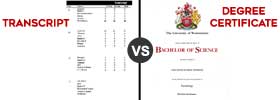Difference between Bipolar and Unipolar
Key Difference: Bipolar disorder is a condition in which people experience extensive mood swings. A person may start of being happy and then go quickly to becoming sad or depressed. Unipolar depression is a mental disorder that results in a patient having episodes of low-mood, low self-esteem, loss of interest, loss of pleasure in enjoyable activities.
Bipolar and unipolar disorders are two conditions that are often confused as being the same because of the similarities in the name. However, these two medical disorders differ from each other greatly. Bipolar disorder patients exhibit mood swings, in which they are happy and then become sad. However, unipolar is a severe form of depression and the patient constantly suffers a low-state of mood.
 Bipolar disorder is a condition in which people experience extensive mood swings. A person may start of being happy and then go quickly to becoming sad or depressed. These mood swings are very fast and can happen in a couple of minutes. Bipolar disorder is equally common in men and women between the ages of 15-25 and there is no exact reason for the cause of this disorder, though it has been attributed to life changing situations, medications, lack of sleep and recreational drug use.
Bipolar disorder is a condition in which people experience extensive mood swings. A person may start of being happy and then go quickly to becoming sad or depressed. These mood swings are very fast and can happen in a couple of minutes. Bipolar disorder is equally common in men and women between the ages of 15-25 and there is no exact reason for the cause of this disorder, though it has been attributed to life changing situations, medications, lack of sleep and recreational drug use.
There are three types of bipolar disorder: Bipolar Disorder type I, Bipolar Disorder type II and cyclothymia. Bipolar type I is a disorder where people at least one manic episode and periods of major depression. This type of disorder was previously known as maniac depression. Type II have never suffered a full mania, however they experience high energy levels and impulsiveness, causing to be happy and really excited (known as hypomania) at one time and sad and depressed a little while later. Cyclothymia is a mild form of bipolar disorder in which a person only experiences small mood swings which are not that dangerous. People with this form alternate between hypomania and mild depression.
The symptoms for bipolar disorder may last from minutes to days to months and include easy distraction, feeling of sleeplessness, poor judgment, loss of temper, reckless behavior or lack of self control (drug use, dangerous behavior, reckless driving, etc), very elevated mood (hyperactive nature, increased energy, etc), very involved in activities, easily upset or agitated, loss of appetite, fatigue or lack of energy, difficulty concentrating, loss of pleasure in activities, low self-esteem, suicidal thoughts, etc. These symptoms take more prominence in bipolar disorder type I and are present with a lesser intensity in the type II. CBT, parental anxiety management, hypnotherapy treatments, herbal treatments, caffeine elimination and combined treatments are few treatments that have been proving effective in treating bipolar disorders.

Unipolar depression is a mental disorder that results in a patient having episodes of low-mood, low self-esteem, loss of interest, loss of pleasure in enjoyable activities. Other names for this disorder include major depressive disorder (MDD) clinical depression, major depression or recurrent depression. This disorder is considered as a severe form of depression, where a person could have longer periods of low states compared to the shorter periods experienced in normal depression. Unipolar disorder was named, described and classified in the 1980 edition of the American Psychiatric Association's diagnostic manual. The unipolar depression affects school life, personal life, eating habits, sleeping habits and if left untreated could result in a person committing suicide.
Symptoms for the disorder include change in eating and sleeping habits, change in behavior, alternation in personal relationships, state of low mood, loss of appetite, feelings of worthlessness, inappropriate guilt or regret, helplessness, hopelessness and self-hatred. Severe cases can also include symptoms similar to psychosis such as delusions and hallucinations. Other symptoms also include withdrawal from social activities, reduced sex drive, insomnia, poor concentration, inability to focus, thoughts of death or feelings of committing suicide. Major depression commonly occurs with other psychiatric problems such as anxiety, bipolar disorder, etc.
Unipolar depression is believed to be caused by a number of factors that affect a person. It can include psychological, biological and social. Genetics is also known to play a part in causing depression. Any sudden changes such as death of illness in the family could also help trigger the disorder. Depression has also been closely linked to drugs and substance abuse, as well as, withdrawal from drugs and substances. Unipolar depression can be classified into five subtypes known as specifiers, which are recognized by The DSM-IV-TR. Wikipedia lists them as:
- Melancholic depression is characterized by a loss of pleasure in most or all activities, a failure of reactivity to pleasurable stimuli, a quality of depressed mood more pronounced than that of grief or loss, a worsening of symptoms in the morning hours, early-morning waking, psychomotor retardation, excessive weight loss (not to be confused with anorexia nervosa), or excessive guilt.
- Atypical depression is characterized by mood reactivity (paradoxical anhedonia) and positivity, significant weight gain or increased appetite (comfort eating), excessive sleep or sleepiness (hypersomnia), a sensation of heaviness in limbs known as leaden paralysis, and significant social impairment as a consequence of hypersensitivity to perceived interpersonal rejection.
- Catatonic depression is a rare and severe form of major depression involving disturbances of motor behavior and other symptoms. Here the person is mute and almost stuporous, and either remains immobile or exhibits purposeless or even bizarre movements. Catatonic symptoms also occur in schizophrenia or in manic episodes, or may be caused by neuroleptic malignant syndrome.
- Postpartum depression, or mental and behavioral disorders associated with the puerperium, not elsewhere classified, refers to the intense, sustained and sometimes disabling depression experienced by women after giving birth. Postpartum depression has an incidence rate of 10–15% among new mothers. The DSM-IV mandates that, in order to qualify as postpartum depression, onset occur within one month of delivery. It has been said that postpartum depression can last as long as three months.
- Seasonal affective disorder (SAD) is a form of depression in which depressive episodes come on in the autumn or winter, and resolve in spring. The diagnosis is made if at least two episodes have occurred in colder months with none at other times, over a two-year period or longer.
Unipolar can be treated using anti-depressants, behavioral therapy and cognitive therapy. Therapy can also be used to prevent an onset of the disorder. In case the patient does not respond to therapy or anti-depressants, electroconvulsive therapy can also be used. In this therapy electrical pulses are sent directly to the brain via two electrodes that are attached to each temple. The electric pulses try to induce a seizure while the patient is placed in a brief period of general anesthesia. This is a quicker and a faster way to help patients that have stopped responding to other methods of treatement.
|
|
Bipolar |
Unipolar |
|
Definition |
Bipolar is a psychotic disorder during which the patient exhibits excessive mood swings such as mania and depression. |
Unipolar is a condition that causes people to be in a state of low mood, low self-esteem and loss of interest in activities. This state affects the person’s daily activities. |
|
Symptoms |
Symptoms differ depending on the person. However, constant and excessive mood swings are associated with bipolar. |
Low energy, a loss of interest in normal activities, change in appetite, weight gain or weight loss, excessive sleep, insomnia, and the loss of ability to concentrate. |
|
Causes |
Bipolar disorder has been attributed to genetics, physiological and environmental factors. |
According to the biopsychosocial model, unipolar is caused by a number of factors such as biological, psychological, and social factors all play a role in causing depression. Some known causes include abuse, certain medications, conflict, death or a loss, genetics, major changes, personal problems, serious illnesses and substance abuse. |
|
Types |
Bipolar I disorder, Bipolar II disorder, Cyclothymia and Bipolar disorder NOS. |
Melancholic depression, Atypical depression, Catatonic depression, Postpartum depression and Seasonal affective disorders (SAD). |
|
Treatment |
CBT, parental anxiety management, hypnotherapy treatments, herbal treatments, caffeine elimination and combined treatments. |
Depending on the worseness of the depression, it can be treated through medicines, therapy and various other measures. |
Image Courtesy: cobbersonthebrain.areavoices.com, myspace.com









Add new comment